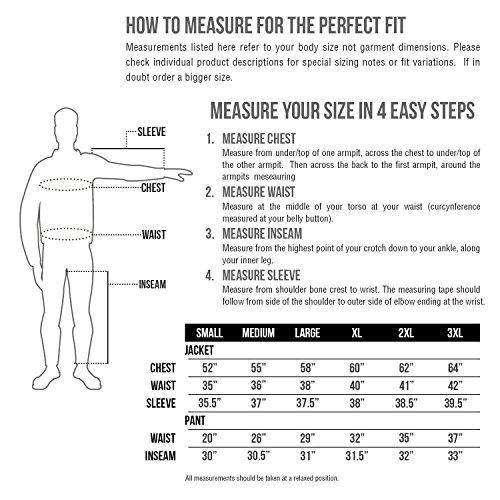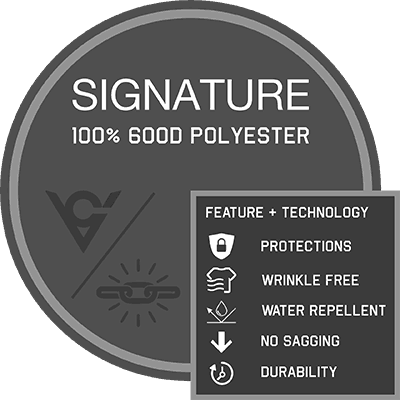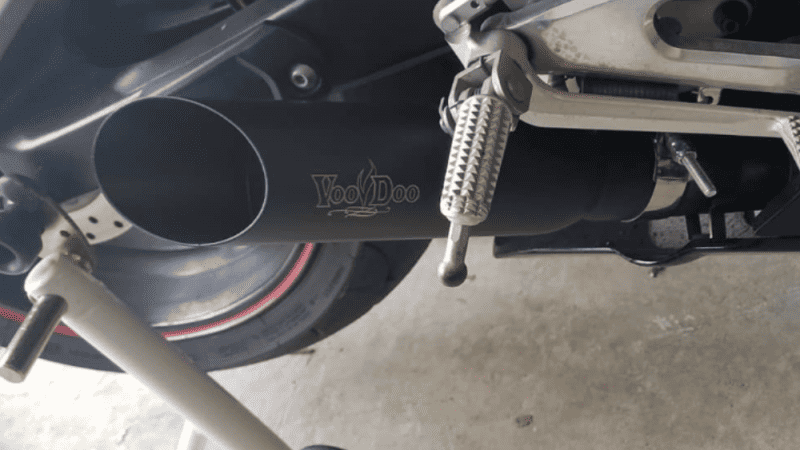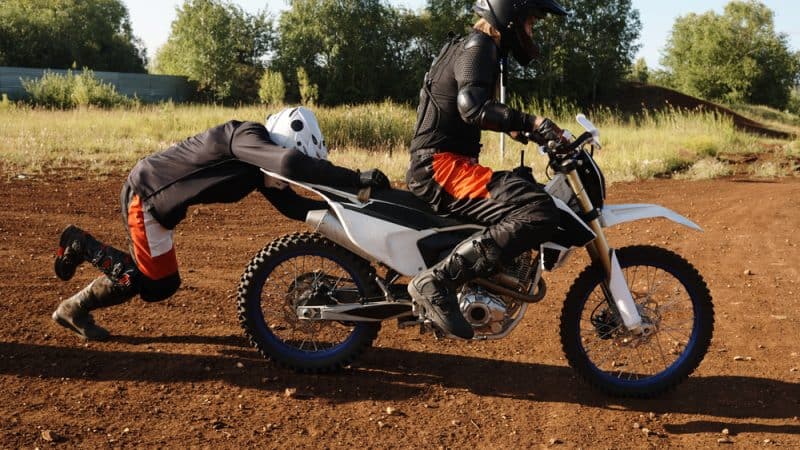Be it a shower or deluge, rain can be your worst nightmare when on a motorcycle if you’re not properly prepared. During the spring and winter months, precipitation is unpredictable, and if you are in a rainy state, expect to get caught at least one shower while riding your bike. Rather than avoiding rainy days altogether, learn to ride your motorcycle in the rain.
Before The Ride
For maximum safety, inspect your bike to make sure it’s ready to tackle a ride in the rain.
• Fluids: Check your motorcycle to make sure there’s no brake fluid or oil leakage. While oil leaks aren’t very dangerous in dry conditions, when oil mixes with water, the road becomes a slick and dangerous course.
• Brakes: Make sure the brake pads have enough material left to help you with prompt stops in wet conditions.
• Tires: Check that your tires have enough tread to push water away and grip the road. You also want to ensure they have enough air pressure. Under or over-inflated tires react differently in water, but both are potentially dangerous.
Weatherproof Gear
In order to keep you and your bike safe, you should have the correct riding gear and attire ready to go. You can choose between water-resistant and waterproof items. Water-resistant will shed water, but after a period of time, water will begin to permeate the material. Waterproof, on the other hand, will never allow for water to absorb into the material, unless you get completely submerged in water.
• Water-resistant or Waterproof Gear: Jackets and one piece suits should be zipped up tightly when riding in the rain to prevent water from seeping. Zippers should have a flap that covers the edges to protect the interstices. Cuffs on the jacket or coat need to be long enough to reach your gloves.
• Riding Boots and Gloves: More effective deterrents against complete saturation of your clothes. Both boots and gloves need to be tight enough to prevent water from dripping through. No one likes cold, wet socks.
• Helmets and Goggles: For the best protection, get a full-faced helmet. If you have a ½ or ¾ face helmet, get a pair of goggles. Pair the goggles with a waterproof balaclava that can shed water away from your face.
• Miscellaneous: If you have a saddlebag or storage unit, consider keeping a change of dry clothes with you. Also, keep plastic bags with you to keep valuables dry if you happen to get caught in a sudden rainstorm. Dry bags or waterproof backpacks can also help.
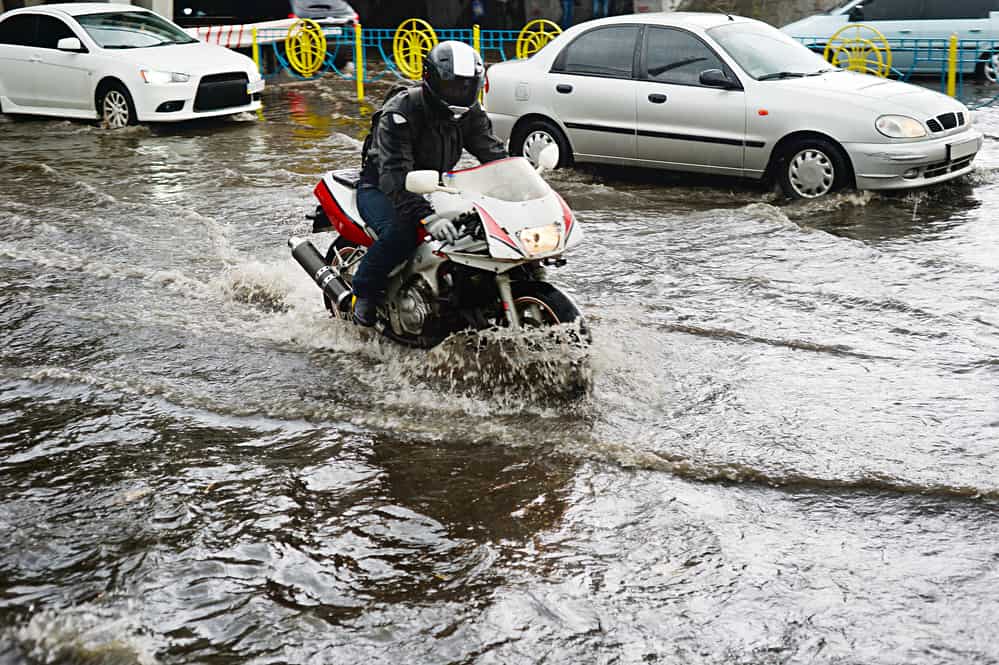
Be Cautious Of Road Conditions
Wet roads are dangerous for motorcyclists and other vehicle drivers, regardless of how prepared you may be. Even when the roads appear clean, they could be slick from oil. Here are some things to consider when traveling by motorcycle in the rain:
Less Traction
The first hour of rainfall is the most dangerous, because oils absorbed into the asphalt rise to the surface. During this time, it’s best to pullover at a rest stop about wait for about an hour. Once the rain has washed the road of oil and debris, you can head out again. Remember that this also means an increased braking distance.
Less Visibility
Sometimes, the fog or mist is too dense, or the rain is falling so hard you or other drivers can’t see. You can make yourself more visible to the traffic around you by wearing high visibility clothing and reflective patches.
Hydroplaning Risk
Hydroplaning occurs when water prevents the tire from making contact with the road. Reduce the risk of hydroplaning by avoiding painted lines, manhole covers, iridescent patches on the road and puddles (oil), tar snakes, metal crossing, and other places with reduced traction.
Also, you should reduce your speed when approaching puddles you can’t maneuver around. Start slowing down, squeeze the clutch, then coast through the puddle. If you’re going too fast, it’s better to maintain that velocity rather than slowing down abruptly, as this will reduce friction could cause fishtailing.
Decrease the risk of hydroplaning further with all-weather tires.
Nature’s Wrath
Stay aware of lightning, hail, ice, sleet, and other conditions that could transpire in a rainstorm. High winds can cause debris to fall into the road, and you might not see it due to decreased visibility. If it starts lightning, pull over.
Conclusion
Not every day is going to be perfect riding weather. Planning ahead and being prepared goes a long way when dealing with rainy conditions. Not only will you stay dry, but you will arrive at your destination safely.
Want more riding tips? Head over to my YouTube channel. Subscribe to receive notifications and never miss an update.
You Might also like
-
Viking Cycle Motorcycle Rain Gear Review
If you’re a biker, you’ve undoubtedly heard of Viking. They’re a leading name in motorcycle gear, making some of the best coats, packs and much more. Did you know they also make the best motorcycle rain gear?
Riding motorcycle in the rain comes with a host of problems, not all of which have to do with road safety. I you live in an area that runs the gamut of climates and weather, and you like to depend on your bike for transportation, you need to be prepared.
When it comes time to buy your motorcycle rain suit, you want the best motorcycle rain gear you can get, and unsurprisingly, that’s going to come from Viking – who else?
What is Motorcycle Rain Gear?
Rain gear for motorcycle riding consists of one or two components – at least a jacket/top, and often, a pair of easily-removed pants. The material used is water-resistant, often nylon or poly-synthetic in nature, capable of sloughing off the built up water, and helping to fight the cold, damp wind you’ll be plowing into at high speed.
Not all rain gear for motorcycle riding is made equally, and Viking, already known for their excellent jackets, pants and packs, have combined art and material sciences to produce the best rain suit for motorcycle riders that money can buy.
Not only will it keep you warm and dry, but it’s remarkably easy to clean – count on mud and dirty tar-laden water splashing on you if you’re interested in riding motorcycle in rain.
Is it Lame to Wear Rain Gear on a Motorcycle?
You like to be respected by your fellow bikers, and there’s nothing wrong with that. If you’re going to ride, you want to ride in style and comfort. This has led some motorcycle riders to leave rain gear for motorcycle riding out of their repertoire in the past.
However, there is nothing lame or uncool about rain gear – the dirty water flying up off the road, and the rain itself, will ruin a leather jacket or a good pair of pants, and the high wind can result in you catching a cold, or even the flu or pneumonia.
Besides, the best motorcycle rain suit designs are quite stylish, matching any rider’s taste in bike and in the rest of their ensemble.
You don’t want to arrive at your destination soaking wet, as wet clothes is one of the most uncomfortable things one can imagine. On a colder, rainier day, you can become very ill if you allow yourself to get wet like this, and the wind will chew right through you as well.
Safety on a motorcycle isn’t just about riding properly and wearing your helmet. It’s about protecting your whole body from the elements, and that includes rain.
OVERVIEW
Viking Cycle Rain Gear offers you the freedom and comfort of movement for every biker’s needs in heavy rainy weather. The color options are bright for stronger visibility, along with reflective striping on the jacket to make sure you get to and from each destination safe and sound. Soft polyester outer shell with PVC packaging; our jacket has a Full-Length Zipper with a Velcro Strom Flap as well. In addition, we’ve added a head shield on the calf for added comfort and safe riding.
Ride through the rain while keeping yourself warm and dry by using these quality rain suits. While using this Viking Cycle Rain Suit you’ll be able to ride during heavy rain while knowing that your leathers under the rain suit will stay nice and dry. This rain suit has built-in reflective fabric on the pants and jacket to give you better night time visibility, keeping you dry and safe while you ride during bad weather.
What is the Best Motorcycle Rain Gear?
Viking’s rain suit for motorcycle riders is a top of the line, two-piece design. The stylish exterior is made of the latest in hydrophobic materials, sloughing off water, even gritty, muddy water from the road. The adjustable sleeves and collar of the jacket make it a one-size-fits-all solution that anyone with anybody build can wear comfortably and with pride.
The pants fasten to the jacket easily, creating a complete seal against the elements. With Velcro, it can easily be adjusted while providing a snug, closed fit that will never jam, rust or corrode.
The advanced material also breathes, with an advanced two-way thermal lining that can keep heat in against the cold, while also allowing breathing so summer rains don’t cook you in your own sweat and heat.
With an attractive gray/black style, it provides a timeless look that’s anything but lame or unfashionable, matching any bike, and any rider, be they young or old. If you’re interested in riding a motorcycle in rain, this is definitely the gear for you. Now you can enjoy those cross-country rides and be prepared for any weather this beautiful country can throw at you, and know you’ll arrive safe, dry, and feeling just fine.
To learn more about Viking’s other awesome biking gear, or about riding a motorcycle in the rain safely, subscribe to my YouTube channel today. I have some awesome things I want to show you, and this is just a taste!
TECHNOLOGY
Viking Cycle’s Rain Gear Fabric is a 100% 600D Polyester coated by PU (polyurethane). The 600D Polyester coated by PU, is also wind and water resistant so it will provide great protection against cold wind and rain and it will not sag and creates less wrinkle overtime. The fabric is light weight but highly resilient against abrasions to provide more resistance between the body and the road for your protection, and also stands against wear and tear for product durability.
-
Everything You Need to Know About Shorty Motorcycle Exhausts
The rumble of a motorcycle engine is a sound that stirs the soul of many riders. But sometimes, the stock exhaust just doesn’t cut it. Enter shorty exhausts, a popular aftermarket modification that promises a bolder sound and a sleeker look. But are they right for you? This guide delves into everything you need to know about shorty motorcycle exhausts, helping you make an informed decision.
Key Takeaways
- Shorty exhausts, also known as slip-on exhausts, offer a sleeker look and potentially louder sound compared to stock exhausts.
- Consider increased noise levels, potential performance changes, and legal compliance before installation.
- Research specific exhaust models for your motorcycle to understand performance impact.
- Explore alternative exhaust options like full systems or baffles for additional considerations.
Comparison Table: Shorty Exhausts vs. Stock Exhausts
Feature Shorty Exhaust Stock Exhaust Appearance Sleeker, more aggressive Bulky, standard design Weight Lighter Heavier Sound Louder (may not be legal) Quieter Performance May improve or decrease (research specific model) Consistent, designed for specific motorcycle Cost Varies Usually included in the motorcycle price No products found.
What are Shorty Exhausts?
Shorty exhausts, also known as slip-on exhausts, are aftermarket mufflers that replace the stock exhaust on your motorcycle. They are significantly shorter and lighter than the factory exhaust, offering a more compact and aggressive appearance. However, it’s crucial to remember that they are often louder and may not comply with noise regulations in all areas.
Why Choose a Shorty Exhaust?
Riders choose shorty exhausts for several reasons:
- Enhanced aesthetics: Shorty exhausts can significantly improve the look of your motorcycle, giving it a more customized and aggressive appearance.
- Lighter weight: The reduced size and weight of a shorty exhaust can contribute to a slight improvement in handling and performance.
- Potentially louder sound: For some riders, the deeper and louder sound of a shorty exhaust adds to the riding experience.
No products found.
Things to Consider Before Installing a Shorty Exhaust:
While shorty exhausts offer potential benefits, there are also drawbacks to consider:
- Increased noise: As mentioned earlier, shorty exhausts are often significantly louder than stock exhausts and may not be legal in all areas. Always check local regulations before installing one.
- Potential performance changes: While some shorty exhausts can improve power delivery, others may negatively affect performance due to backpressure changes. Researching specific models and their impact on your motorcycle is crucial.
- Potential for increased heat: Due to their shorter design, shorty exhausts may direct more heat towards the rider’s legs. Consider this factor, especially for long rides or hot climates.
No products found.
Installation:
Installing a shorty exhaust can often be done at home with basic tools and mechanical knowledge. However, if you’re not comfortable doing it yourself, it’s recommended to seek professional help from a qualified mechanic. The provided reference (How To Install A Voodoo Slip-On Exhaust) offers a helpful guide on installing a specific shorty exhaust model.
The Final Verdict
Shorty exhausts offer a unique combination of style, sound, and potential performance gains for motorcycle enthusiasts. However, it’s essential to consider the potential drawbacks, such as increased noise and potential legal implications, before making a decision. Remember to prioritize safety and ensure your chosen exhaust complies with local regulations.
Additional Considerations:
- Legality: As the provided article mentions, exhaust modifications might not be legal in all areas. Always check local regulations to ensure compliance.
- Performance impact: While the article mentions potential performance changes, it’s important to note that these can vary depending on the specific motorcycle and exhaust model. Consulting a mechanic or researching specific exhausts for your motorcycle is recommended for a more accurate assessment.
- Alternatives: Shorty exhausts aren’t the only option for modifying your motorcycle’s exhaust. Consider researching other options like full exhaust systems or muffler baffles to find the best fit for your needs and preferences.
By carefully considering all the information presented here, you can make an informed decision about whether a shorty exhaust is the right choice for your motorcycle.
No products found.
6 FAQs About Shorty Exhausts
1. Will a shorty exhaust make my motorcycle faster?
Not necessarily. While some shorty exhausts can improve power delivery, others might negatively impact performance due to backpressure changes. Researching specific models and their impact on your motorcycle is crucial.
2. Are shorty exhausts street legal?
It depends on local regulations. Shorty exhausts are often louder than stock exhausts and might not comply with noise ordinances in some areas. Always check local regulations before installing one.
3. Can I install a shorty exhaust myself?
Installation can often be done at home with basic tools and mechanical knowledge. However, if you’re unsure, seek professional help from a qualified mechanic.
4. What are the alternatives to shorty exhausts?
Consider full exhaust systems for comprehensive performance upgrades or muffler baffles for a slightly modified sound without significant visual changes.
5. How much do shorty exhausts cost?
Prices vary depending on the brand, model, and material. Expect to pay more for well-known brands and high-quality materials.
6. Where can I find shorty exhausts for my motorcycle?
Many motorcycle parts retailers and online stores offer a wide variety of shorty exhausts. Ensure the chosen exhaust is compatible with your specific motorcycle model.
No products found.
-
How To Push Start A Motorcycle
Any serious motorcyclist will know the essentials, like wearing appropriate safety gear, proper riding position, turning mechanisms, and how to do a push start. Wait, you don’t know how to clutch start a motorcycle? What happens if you can’t start the motor with the switch? Good thing you’re here. In just a few steps, you can learn how to effectively push start a motorcycle and get riding in no time.
Before You Push Start
There are a few things to keep in mind if you plan on push starting (also called bump starting and clutch starting) your bike. First, push starting isn’t the ideal method, and it sometimes doesn’t work.
Next, if your motorcycle isn’t starting, check some things that sometimes prevent a motorcycle from starting:
- Ignition kill switch – make sure the kill switch is set to the STOP position.
- Fuel level – your fuel gauge could be faulty, so pop the cap and check to make sure you’re not running on E.
- Fuel petcock – if you have a non-EFI bike, make sure the fuel tap petcock is OFF.
- Kickstand – some bikes have an added safety feature that prevents it from starting if the kickstand is down.
- Gear set in neutral – if the gear is engaged, the bike will refuse to start. Do a double-check.
If none of these apply to your situation, then it’s time to push start your bike.
How To Push Start
Follow these steps in the order listed.
Find A Hill
While you could get a few friends to push your motorcycle, you’re not always going to be traveling in a group. When that happens, you need to find yourself a hill. Steep slopes help you get to the proper speed to bypass the start system.
On a flat road? Don’t despair. If you can push the bike at a reasonable speed then jump on and release the clutch, you can still do a push start.
Engage 2nd or 3rd Gear
A lesser known trick to a successful push start is to avoid 1st gear and go straight to 2nd or 3rd gear. Avoid 1st gear entirely if your bike as a high compression engine.
The reason why skipping 1st gear is important is because you could potentially lock the rear tire, which would result in a crash.
Clutch, Release, and Start
Start moving down the hill to get speed while holding the clutch. As you start to gain momentum, release the clutch and press the start button in a seamless motion. Quickly apply some throttle, and the motorcycle should start. As soon as the bike is roaring, engage the clutch.
It’s important to stay in full control of the motorcycle. Please do this as far from traffic as possible, just in case you end up swerving.
If this doesn’t work on the first try, don’t give up. Stop. Reset yourself, and repeat the first three steps again.
Rev That Engine
This is the final step—the most integral. If you don’t immediately rev the engine, the motorcycle will die again. Stay focused.
Depress the clutch slightly and moderately rev the engine. Don’t let it scream. Keep the revving slightly high so the motor doesn’t choke down. The worse case scenario if you don’t rev the motor is that the bike will die, and you don’t want that—especially since you’ll still be rolling down a hill.
Optionally, once you have the engine running, you can switch to neutral and apply the brakes while revving the engine. This will help you stay focused on keeping the engine from choking. This works best if the motorcycle is cold.
Get Riding
Once the engine has warmed up, do a quick ride to make sure everything is working as it should. Remember that your safety is the most important thing when push starting a motorcycle. Be sure to practice the push starting methods a few times before attempting it for real out on the road. You should be wearing protective gear and be away from traffic. If not, you could seriously hurt yourself and others.
That wraps up how to push start a motorcycle. Just follow the steps that have been outlined, commit to safety, and you will soon be push starting like the pros!
Enjoy reading this article? Get more motorcycle tips and tricks by subscribing to my YouTube channel.




